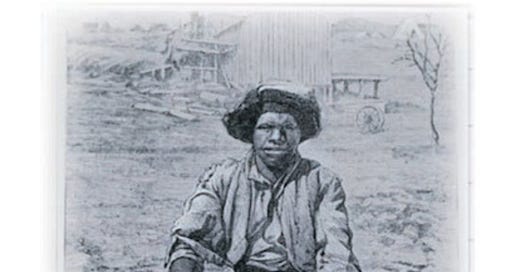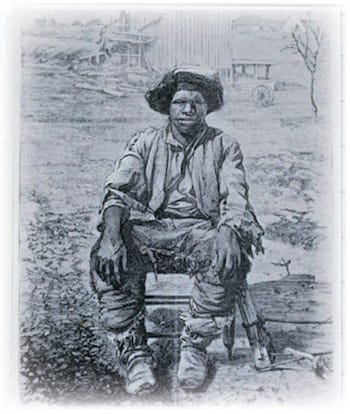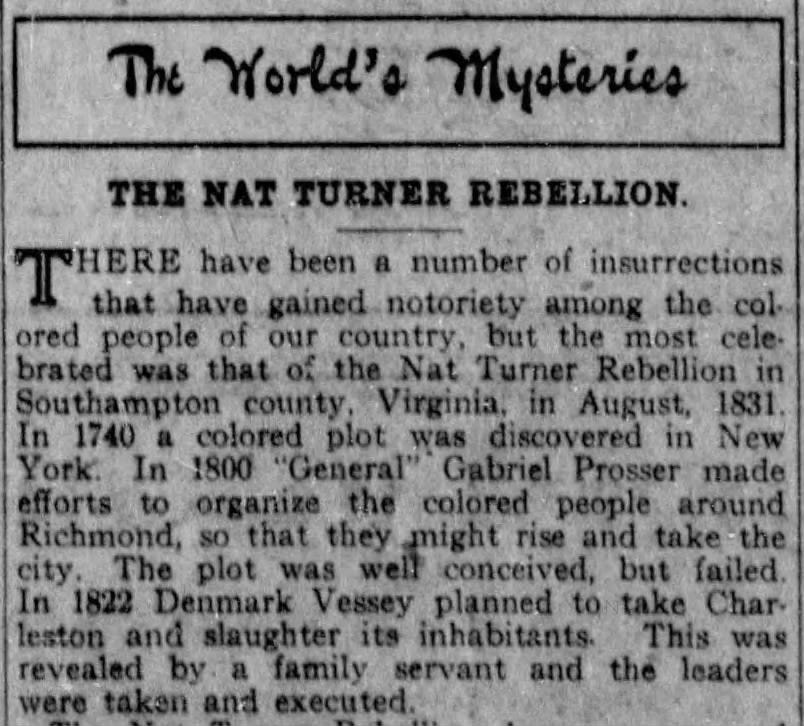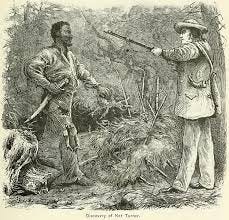It is February when we highlight African American History, and it is the perfect time to talk about Gabriel Prosser. Who is Gabriel Prosser? He was an African-American Blacksmith who was born into enslavement on the tobacco plantation owned by Thomas Prosser in Henrico County, Virginia, a predominantly enslaved area of Virginia, in 1776.
In the same year the colonies declared independence from the Royal British Crown, Gabriel Prosser began his life on Brookfield Plantation.
While his parents are unknown, which is common among those born in enslavement, Gabriel had two brothers–Solomon and Martin. All three brothers worked on the Prosser Plantation. Gabriel and his brother, Solomon, also learned the trade of blacksmithing. Perhaps their father also worked as a blacksmith, which would explain why two of his sons took up the trade.
The world they were born into was pro-slavery. In Richmond, Virginia, a whipping post sat center stage in the town square, and slave jails were erected to hold enslaved persons being processed before auction, highlighting why Richmond was known as the "Largest slave trading center in the Upper South."
Families like Gabriel's were often separated for numerous reasons, from punishment to debt settlement and inheritance. Gabriel, Solomon, and Martin would have been aware of this, which may be another reason their parents are not mentioned.
They may have been sold away when they no longer suited the needs of Thomas, and later his son, Thomas Henry Prosser.
Gabriel was not only physically strong but also remarkably intelligent and skilled. As a highly skilled blacksmith, he was often "hired out" to work in the Richmond Foundries. This was a significant moment in Gabriel's life because it led to two significant things. First, Gabriel could read and write. In a time when only 5% of all enslaved African Americans could read, he found himself in a trade that required him to learn to. Second, Gabriel was able to keep a portion of his wages earned by working in the foundries.
Yes, the majority of his wages were handed over to Thomas Henry Prosser, but Gabriel was still able to make and save his own money.
This meant Gabriel Prosser—an enslaved blacksmith—could read, write, and earn an income at a time when these three abilities were rare and often forbidden among enslaved people. It also meant that while he was traveling between the Prosser Plantation and his work in the foundries (or on other Plantations), Gabriel was able to witness the world around him.
How other slaves were treated.
How free African Americans lived their lives.
How white Americans lived – both owners and sympathetic.
How revolution was popping up around the world: American, French, and Haitian.
Through these firsthand experiences and daily observations, Gabriel Prosser’s understanding of the systemic injustice of slavery on myriad levels inspired his vision of freedom and helped to shape his understanding of the world.
Gabriel Prosser & his Revolution
Remembered as intelligent, charismatic, and strong, Gabriel reached over six feet in height by the age of twenty. He was tall and muscular from all his hours in the forge, shaping and working metal.
In 1799, he, along with his brother Solomon and another enslaved man named Jupiter, were arrested for stealing a pig. When the three were caught, Gabriel wrestled the white overseer to the ground and bit off his ear.
Gabriel was charged with "maiming a white man," a capital offense, but he managed to escape execution through a loophole.
The law stated, through "benefit of clergy," that Gabriel Prosser could choose public branding if he could recite a Bible verse. He chose the branding and recited his verse, and then he was transported to jail for a full month.
Here, inside the slave jail, he thought about his life, his experience, the experiences of those around him, and the churning political climate around the world—and he began to form a plan.
The Plan
In the summer of 1800, Gabriel conceived an ambitious plan that would shake the foundations of Virginia's slave society. His strategy was remarkably sophisticated – he aimed to recruit an army of enslaved people, march on Richmond, and establish a new society based on liberty and racial equality. The plan called for seizing the capitol, taking Governor James Monroe hostage, and negotiating for the end of slavery.
In 1800, the enslaved and free black population of Virginia was “just about half of the roughly 5,700 residents…" which meant that if Gabriel could gather half of the population, he could organize them into military-style units and appoint leaders.
Gabriel's planning was meticulous. His recruitment efforts extended across several counties, and he even welcomed poor whites who supported his cause. The revolutionaries gathered weapons, including swords and bullets forged in secret by Gabriel and other blacksmiths among their ranks.
The Unraveling
On August 30, 1800, the day planned for the uprising, nature seemed to conspire against Gabriel's dream.
A severe thunderstorm struck the region, making roads impassable and preventing the revolutionaries from gathering as planned. This delay proved fatal to the enterprise.
Two enslaved men, Pharaoh and Tom, revealed the plot to their master, who quickly alerted Governor Monroe. Their motivation was most likely due to their growing fear of repercussions. If Gabriel’s Revolt was unsuccessful, they would surely be put to death – but – if they thwarted the revolt before it began, hopefully, they would be spared.
Governor Monroe mobilized the state Militia units, sending them out to thwart the pending revolt. Dozens of suspected conspirators were arrested, but Gabriel managed to escape. Gabriel's escape led to a manhunt for several weeks while he continued to elude capture.
However, Gabriel was later betrayed by another enslaved man, Billy King, who was promised a reward for his information. King informed the militia that Gabriel was hiding in Norfolk, Virginia.
Gabriel was captured in September 1800 and returned to Richmond.
In October, Gabriel and others who joined him for the uprising, were tried for conspiracy. During the trial, it came to light that he had “...400 horseman - that in consequence of the bad weather on Saturday night, an agreement was made to meet at the Tobacco House of Mr. Prosser’s the ensuing night - Gabriel said all the negroes from Peterburg were to join him after he commenced the Insurrection-”
But the weather delayed the plan – leaving room for doubt among the enslaved who originally chose to join him.
Gabriel’s trial was not in front of a jury but in the Court of Oyer and Terminer.1
On October 10, 1800, after a trial marked by its brevity rather than its justice, Gabriel was hanged in Richmond. In total, 26 of his fellow revolutionaries would meet the same fate – including his brothers Solomon and Martin.
Yet, even in death, Gabriel's impact on American history was and is very much indelible.
Historical Significance
Gabriel's rebellion, though unsuccessful, sent shockwaves through Virginia and the entire South. It prompted new restrictions on enslaved people's movements and activities, but more importantly, it demonstrated their capacity for organized resistance and unwavering desire for freedom.
His plot was one of the most sophisticated and far-reaching conspiracies of enslaved people in North American history.
Gabriel Prosser's story remains a powerful reminder of the human cost of slavery and the courage of those who dared to fight against it. Though unrealized in his lifetime, his vision of freedom and equality would eventually find expression in the continued struggle for civil rights and human dignity.
Today, his legacy is a testament to the enduring human spirit and the universal desire for freedom.
In remembering Gabriel Prosser, we honor not just a man who dreamed of freedom but all those who have dared to imagine and fight for a more just world. Though his story ends in personal tragedy, it remains an inspiration to all who continue the struggle for equality and justice.
Resources about Gabriel Prosser:
The Library of Virginia - Virginia’s State Library offers information and insight on Gabriel Prosser.
FamilySearch - Like many other notable and public figures, Gabriel Prosser has a page dedicated to him on FamilySearch. This offers an overview of his life and includes links to resources about his history. It also makes mention of his wife, Nanny Prosser, who I did not include in this post.
James Monroe Highland Museum - The papers of James Monroe mention the uprising. A portion of this is available online on the Highland website. It also has a Teacher’s Resource link and makes mention of those who were enslaved on the Monroe Estate.
Encyclopedia Virginia - This is a wonderful resource for all things historical in Virginia. It includes transcriptions of Gabriel’s trial.
Resources about Researching your African American Ancestry:
The National Archives and Records Administration - Federal Records to help Identify Former Enslaved People (pdf handout)
Digital Library on American Slavery
ProQuest Historical Newspapers
International African American Museum
Always remember to CHECK YOUR LOCAL LIBRARY!! Or Libraries in the area you are researching! A lot of local libraries have Genealogical Holdings and Genealogy Librarians ready to help you with your ancestral research.
And - Look for local Genealogical and Historical Societies!
To learn more about about Genealogy by Aryn - head over to GenealogybyAryn.com, stop by and say hello on BlueSky - Instagram - Facebook - YouTube
Check out — From Research to Novel — my upcoming Webinar!
Stop by Etsy Shop and stop by my Genealogy Shop.
The Court of Oyer and Terminer were established under a 1692 statute in which testimony was heard by five justices, not a jury, with appeal only to the governor -









